John Hurrell – 9 June, 2020
And if you look closely at these small and delicate wash drawings, the two halves are not identical (mark-wise) or perfectly balanced (in alignment) on the white paper. They are not impeccably symmetrical mandalas but overtly material in their rawness, showing delight in the rough 'n tumble of the representation making process, and happily allowing image (and placement) discrepancies.
Auckland
Michael Morley
Studies for a Revolution
Selected by Stella Corkery
3 June - 4 July 2020
In this intimate display of watercolours, downstairs in Michael Lett’s basement corridor, we see seven framed images of amplifiers (based on collected photographs) made by artist and seasoned experimental guitarist Michael Morley—of Dead C and Gate fame. Each amp is a particular brand or product line, and so for an experienced musician like Morley, has associative memories linked to specific aural textures and volume capabilities. Especially when their knob settings are used in conjunction with carefully chosen guitar pick-ups, pedal and laptop programmes. Here though, these electronic accessories are shown in isolation, left on white fields with no contextual background. Not a single cable. No supporting stage.
These works have been shown in two previous group touring shows: the international Sensational Fix: Sonic Youth, 2009 (with a publication) and Sound Full: Sound in Contemporary Australian and New Zealand Art, 2013.
The names of the amplifiers perhaps can be read aloud as a mysterious form of poetry (comprehensible only to live rock-music sound-aficionados), and the images themselves are mirrored: as if connected through the paper hinge of an unfolded Rorschach Test. You might say they are a kind of visual palindrome. They are also a bit like some of Ann Shelton‘s presentations in photography a few years back, where notorious crime scenes were shown in two butted-together mirroring versions of ‘reality.’
The doubling and reversing that Morley does, he sees as an aid to help ‘me think about the amplifier as more than just an object that assists in sound propagation, that the object has a cultural reference as well and that this is something that can be examined in reference to experimentation, excess, and revolution. The idea of these amplifiers becomes an impossibility.’
Here the morphological flipping-over and merging he seems to view as indicative of a new world, a politic where revolution is more than just the turning of protruding knobs or the rotation of a circular piece of vinyl—though the hinge device does suggest a swivelling or swinging of a pivoted plane. The part-kaleidoscope doubled image becomes architectural and then, a sort of hinted-at crevice, tunnel, or thin alleyway. A veiled way beyond the original amplifier ‘idea’.
And if you look closely at these small and delicate wash drawings, the two halves are not identical (mark-wise) or perfectly balanced (in alignment) on the white paper. They are not impeccably symmetrical mandalas but overtly material in their rawness, showing delight in the rough ‘n tumble of the representation making process, and happily allowing image (and placement) discrepancies.
Once (in use) singular, solid and heavy, they are now as art ghostly Siamese twins, thinly painted sound-boxes that as multi-directional couples seem devoid of bodily substance — evanescent mirages that beckon to be mentally entered as symbols for a coming new age. Creating the silent sound of scattered granules of pigment brushed across wet paper fibre. Setting a new piercing, rumbling, but raucously inaudible tone.
John Hurrell

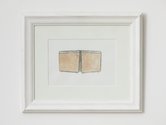
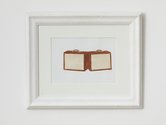
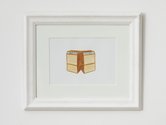

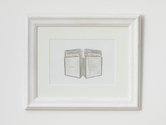
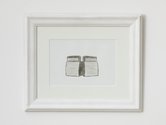
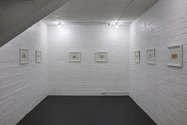
 Advertising in this column
Advertising in this column Two Rooms presents a program of residencies and projects
Two Rooms presents a program of residencies and projects



This Discussion has 0 comments.
Comment
Participate
Register to Participate.
Sign in
Sign in to an existing account.